Contents
- Takes the knitting needles Gerda: schematic and description
- How to tie a three-dimensional takes with knitting needles for a woman?
- Takes braids with needles: diagram and description
- Summer openwork takes with knitting needles: a schematic and description
- Takes from a mohair with knitting needles: a schematic and a description
- Tackles with an English rubber band with knitting needles:
- description Takes with knitting needles:
- scheme Takes with knitting needles:
- scheme. Needles: diagram and description
- Takes Nako( Nako) with knitting needles: description
- Takes braided knitting needles: diagram and description
- Takes the Pumpkin with knitting needles: a schematic and description of
- Video: how to tie a female beret with Gerda?
Perhaps, the beret will never lose his fans. It's easy to link it, and there's always something to choose from.
Both beginner needlewomen and experienced ones want to look beautiful in their own handicrafts. Continuing the theme of knitted headgear, we will analyze the nuances of knitted berets.
Takes Gerda's needles: a schematic and description
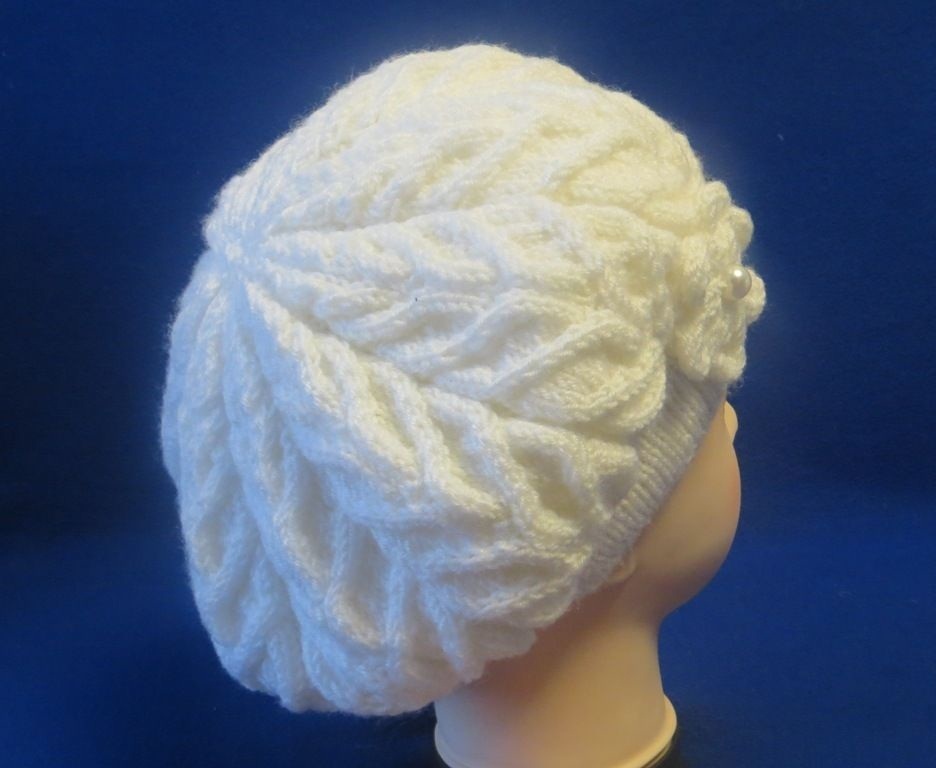 knitted needles bereda on a dummy
knitted needles bereda on a dummy Beret Gerda is attractive by a combination of braids crossed in different directions. So it is suitable for cold weather.
- yarn - 2,5-5 bundles depending on weight, thickness of thread
- spokes - circular or handkerchiefs No. 3,5 and 5, auxiliary of any diameter
- tie the control blade with an elastic band and a basic pattern toaccurately determine the required number of loops for the set and in the place of knitting,
- , use an elastic band 3x3 to a height of 4-4.5 cm on the basic number of loops,
- , go to knitting the main pattern and expanding the beret blade. Recommended cloaks should be done by lifting the broaches between the hinges, after having crossed these broaches,
- for twisting the braids use the auxiliary knitting needle then before, then at work,
- if you picked up the yarn that is indicated for the model from the magazine, you will get 8-10 wedges. If the other is up to 14-16,
- always wash the ready beret in a cool field and allow it to dry on a horizontal surface.
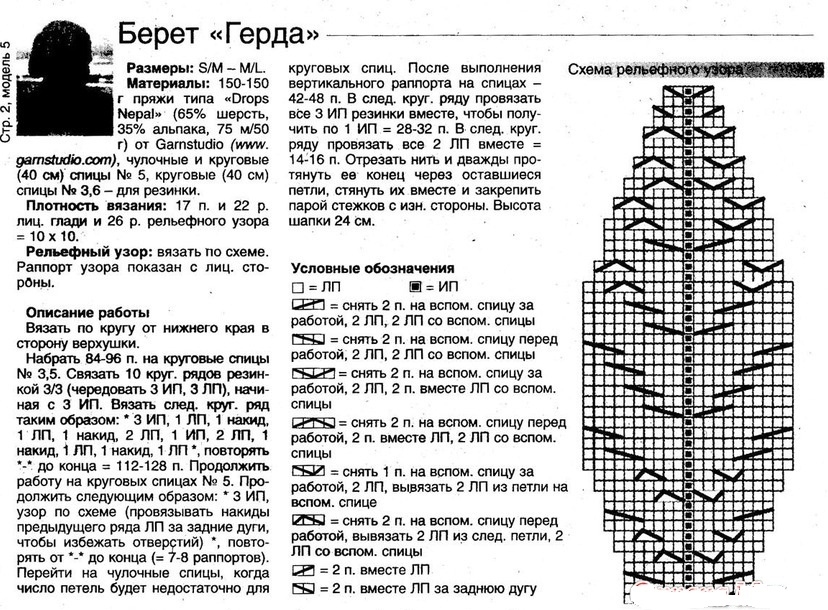 detailed scheme and job description for knitting with berth berda Gerda
detailed scheme and job description for knitting with berth berda Gerda And several variants of patterns and patterns for them for Crochet Berd's knitting:
 patterns of patterns for knitting with berth berth Gerda
patterns of patterns for knitting with berth berth Gerda How to knit three-dimensional knitting needles for a woman?
 volumetric knitted beret with a pompon on a smiling girl
volumetric knitted beret with a pompon on a smiling girl - with braids
- with interlacing of loops
- looseness of knitting of a rubber
There are two ways of knitting such a headdress:
- vertically from the bottom up without a seam
- separately a dome and a bake that stitch together
- Carry out a test sample with an elastic band 1 face 2 purl and achieve a density of 13p.x 18r.,
- Type hinges for knitting a dome in number 91 and knit with knitting needles 4-4.5 by elastic band 1x2 to a height of 23 cm. Use circular or line knitting needles,
- Evenly cut 30 loops on the entire canvas,
- After 5 cm repeat the reduction of the loops for another 30 pieces,
- At a height of 30 cm from the beginning of the knitting, pull the thread through all the remaining loops and tighten them, cut the thread,
- For the bake, type 13 loops and distribute them as follows: 1 edge, 1 purl,9 facial for pigtail, 1 purl, 1 edge,
- CrossbonesIf the blade is equal to the girth of the head, connect the hinges of the last row to the first, or close them and sew them,
- Baku sew to the dome, evenly distributing its hinges to give the same volume in a circle,
- Finished productgently wash with warm water and leave to dry on a horizontal surface.
Description of one of the variants of three-dimensional women's berets is presented below:
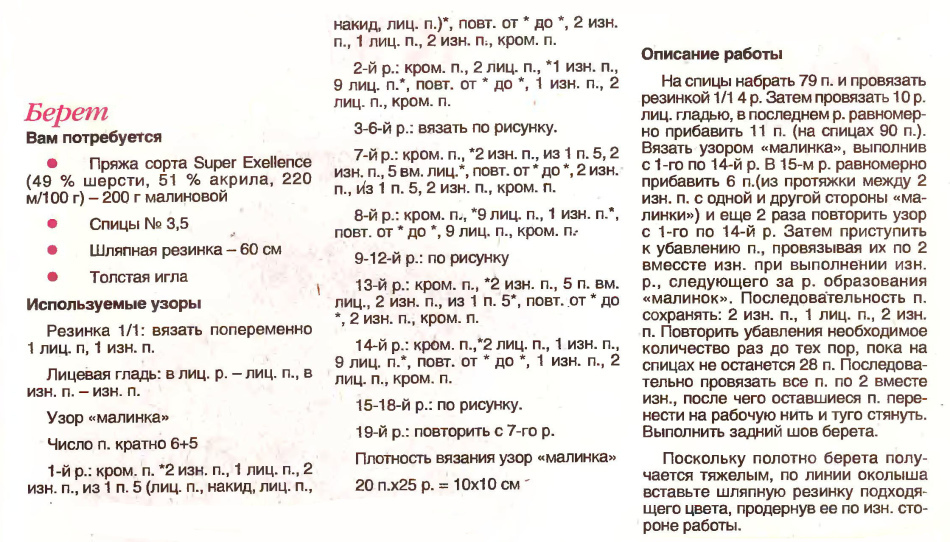 detailed description of knitting with women's berets with cones
detailed description of knitting with women's berets with cones Takes braids with spokes: diagram and description
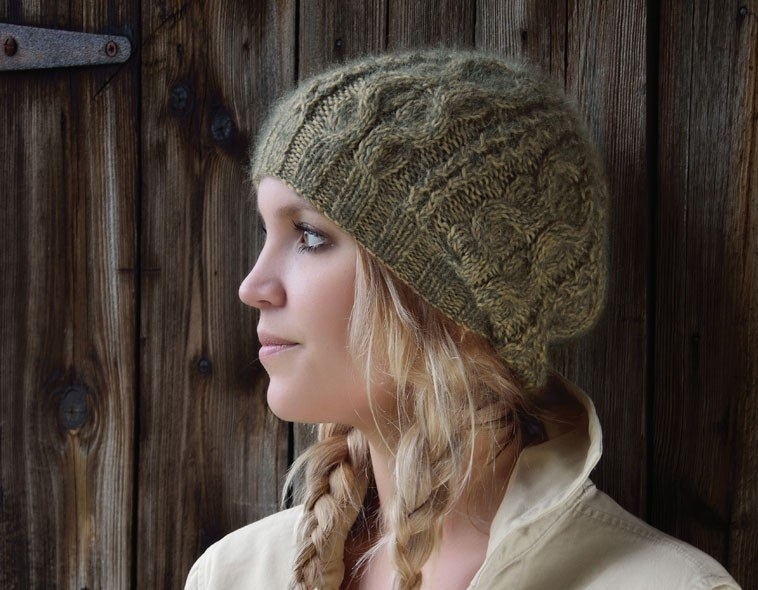 knitted needles with braids on blonde
knitted needles with braids on blonde - straight braids along the entire canvas in the amount of 9-12 pieces,
- originating on the hinges of the rubber band,
- with bifurcations and turns,
- with extensions and narrowings of canvasses,
- with vertical arrangement,
- present only on the bake.
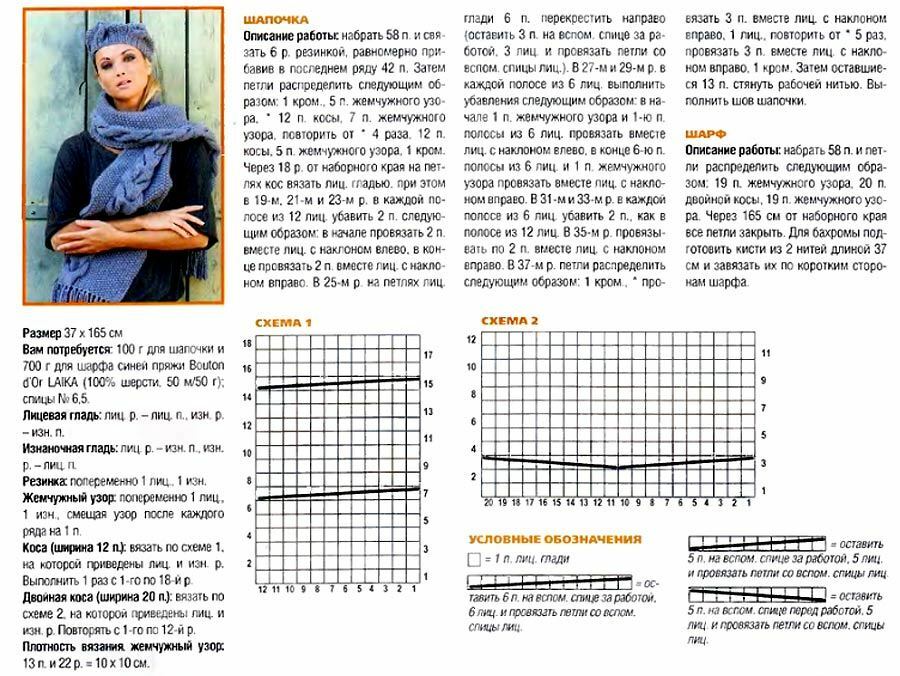 description of the knitting of the female beret with braids, variant 1
description of the knitting of the female beret with braids, variant 1 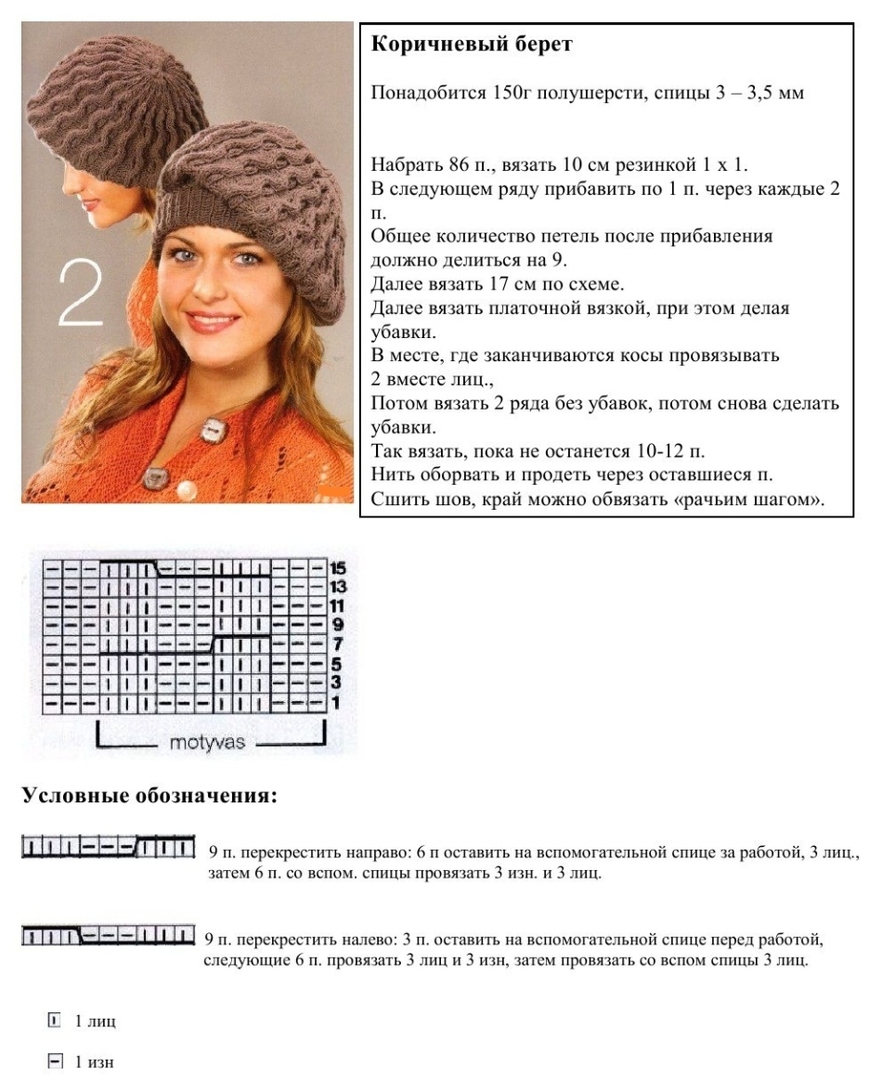 description of the knitting of the female beret with braids, variant 3
description of the knitting of the female beret with braids, variant 3 Summer openwork with knitting needles: scheme and description
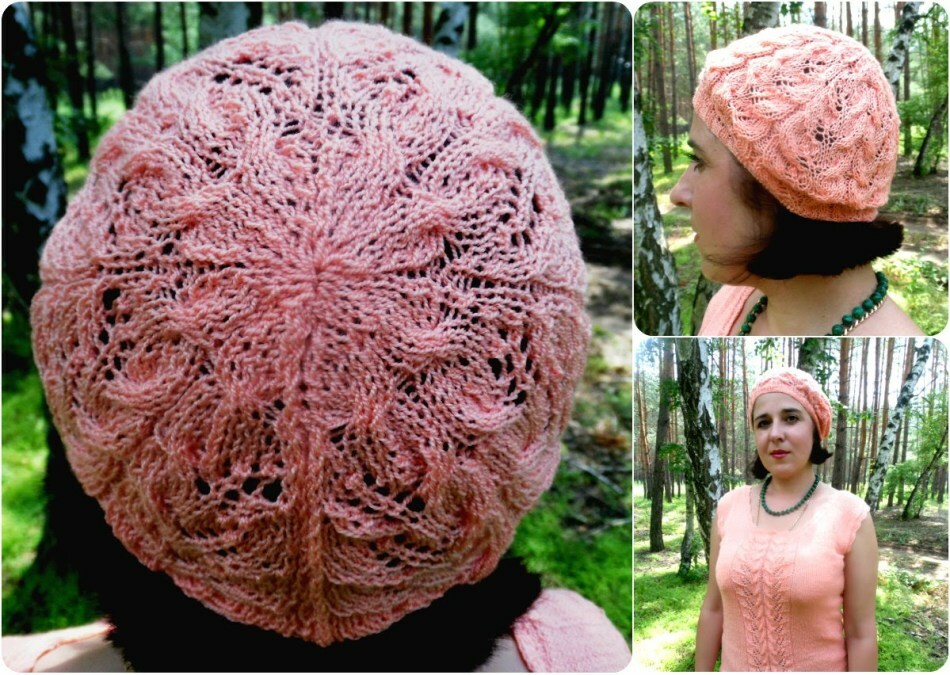 knitted summer open beret on the woman
knitted summer open beret on the woman In the roastthe time of year the female takes is also relevant. Choose for him an openwork pattern and tie with knitting needles from a natural thread, for example, 100% cotton.
- openwork elastic band
- hook
Detailed descriptions and diagrams of knitted women's berets, see below in the pictures.
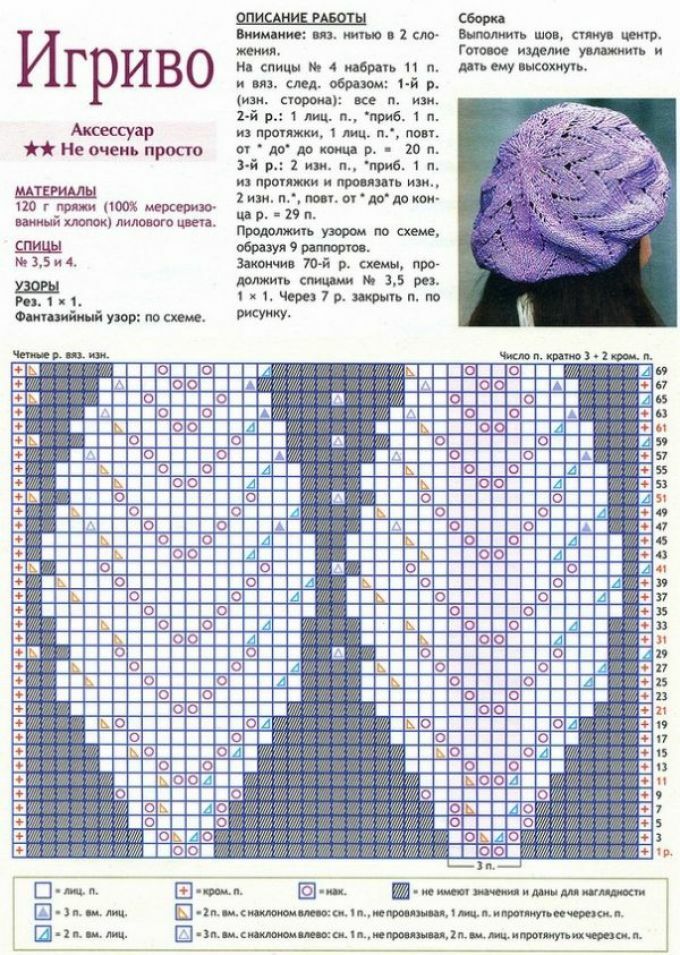 picture and description of the work for knitting with the summer women's beret
picture and description of the work for knitting with the summer women's beret 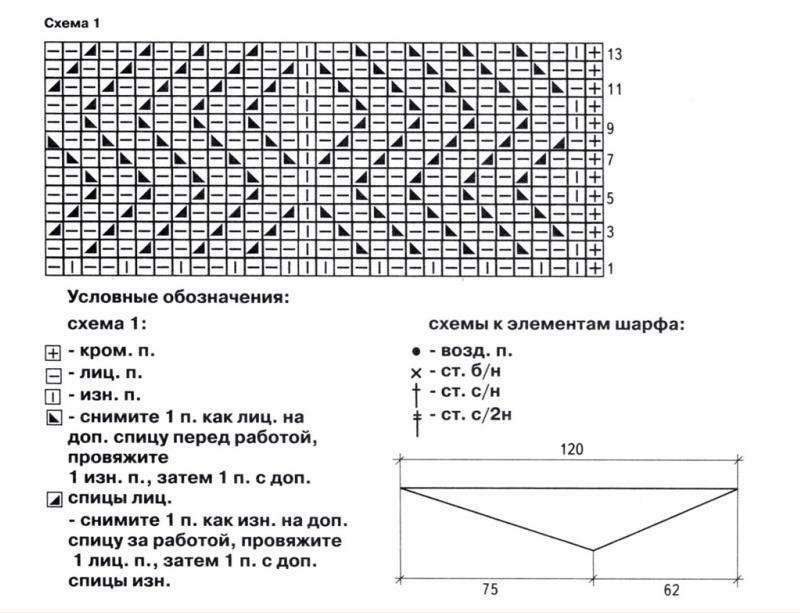 view and the pattern of the openwork pattern for the knitted female beret, option 1
view and the pattern of the openwork pattern for the knitted female beret, option 1 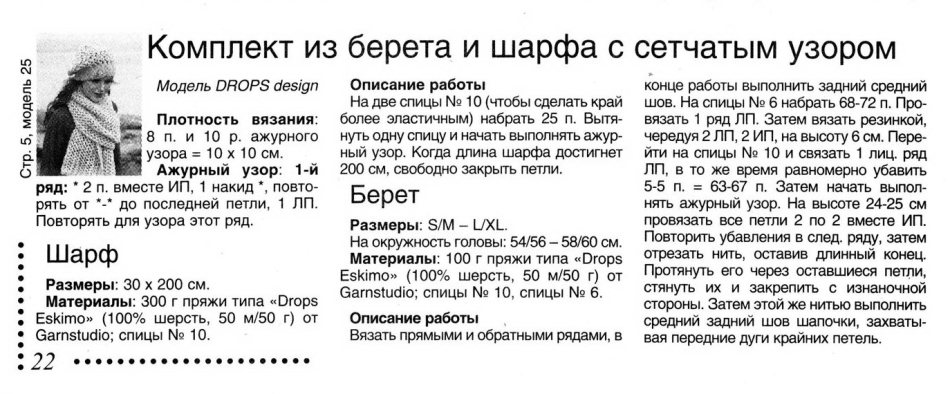 description of the work for knitting the women's openwork beret, option 1
description of the work for knitting the women's openwork beret, option 1 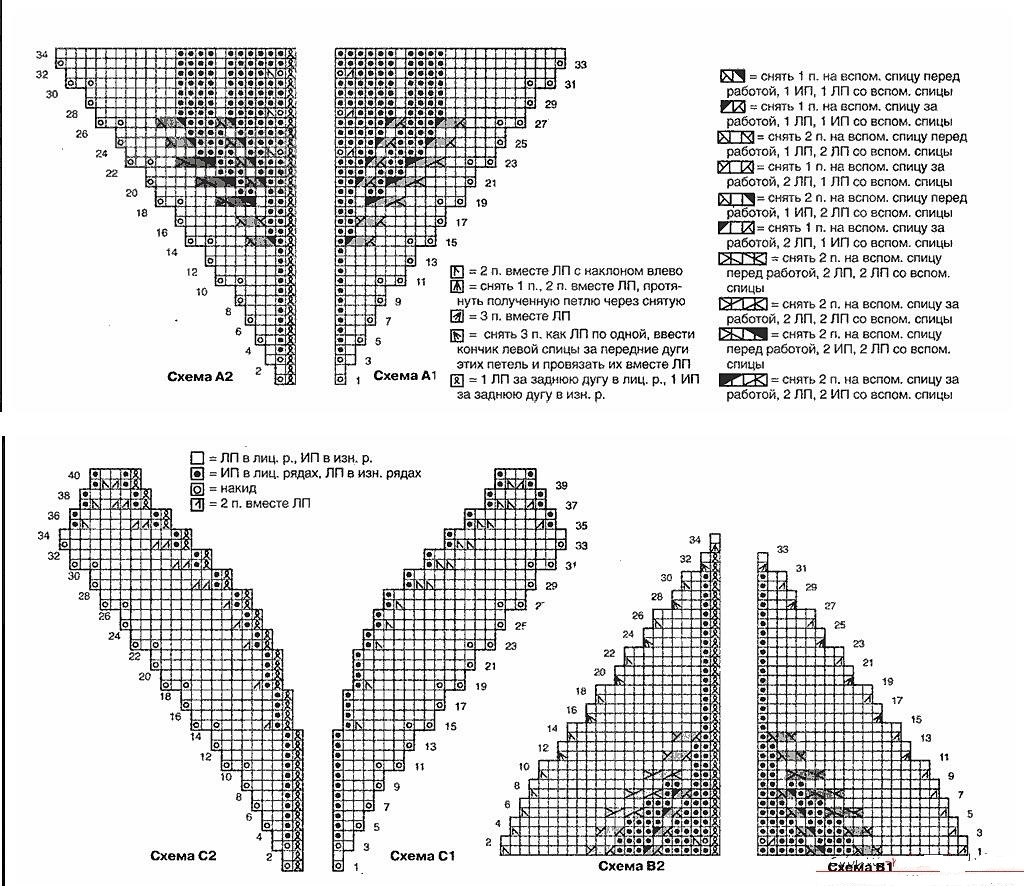 schematic drawing for knitted women's beret
schematic drawing for knitted women's beret  look andscheme of the openwork pattern for a knitted woman's beret, option 2
look andscheme of the openwork pattern for a knitted woman's beret, option 2 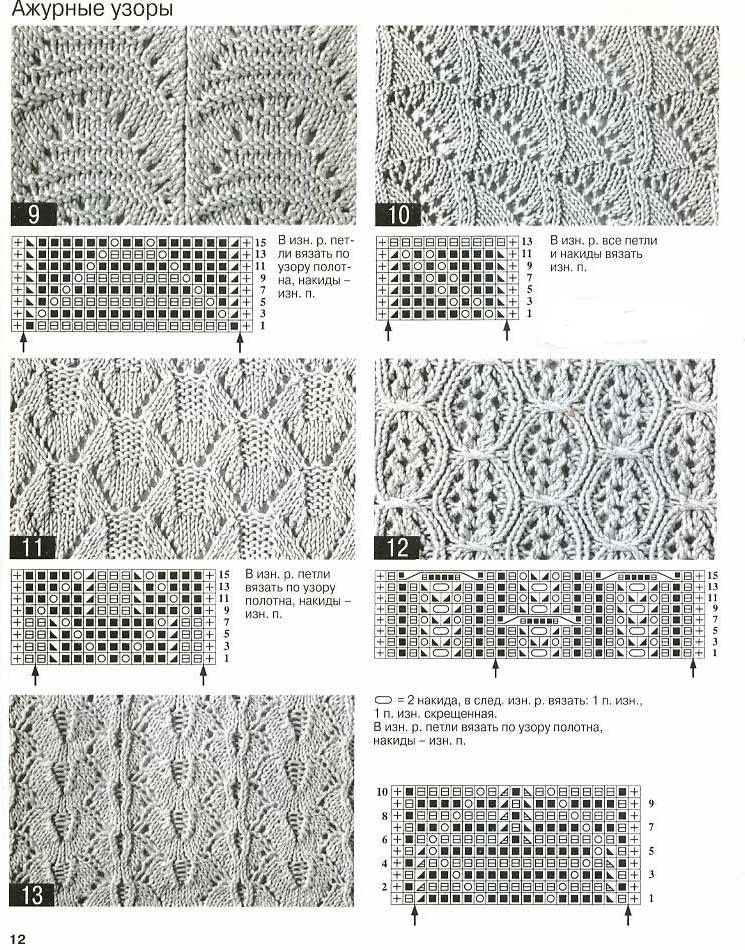 view and diagram of an openwork pattern for a knitted female beret, option 3
view and diagram of an openwork pattern for a knitted female beret, option 3 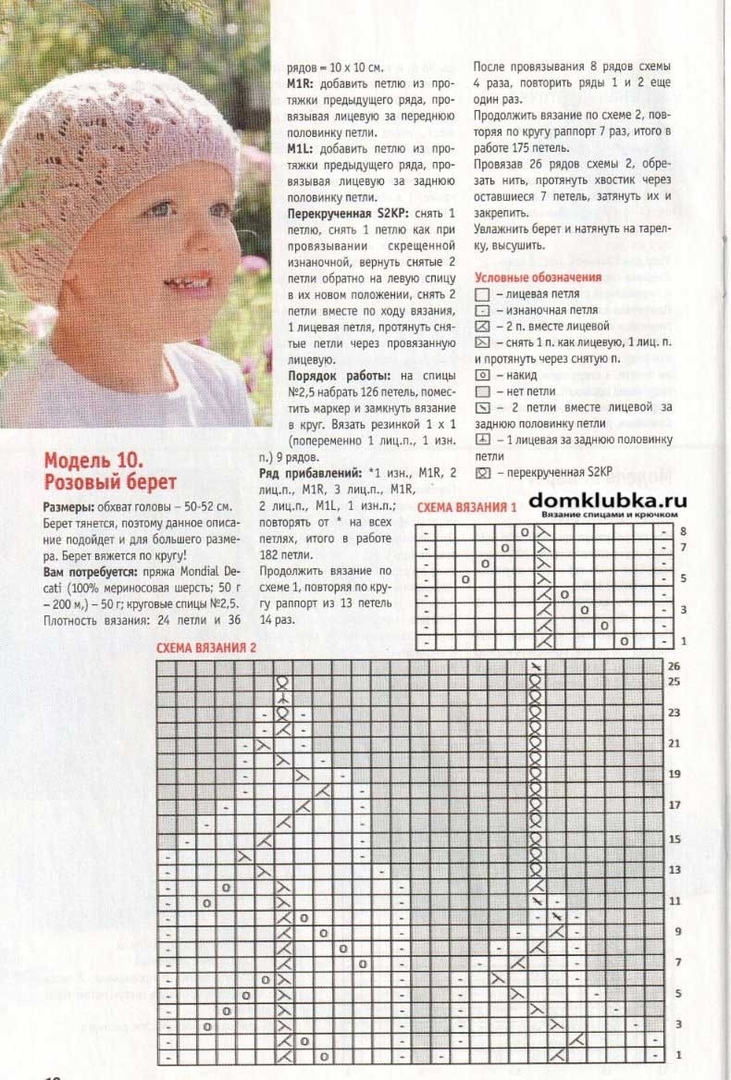 description of the work for knitting with knitting needles of a woman's openwork beretand Option 2
description of the work for knitting with knitting needles of a woman's openwork beretand Option 2 Mohair Beret spokes: a diagram and description of the female takes
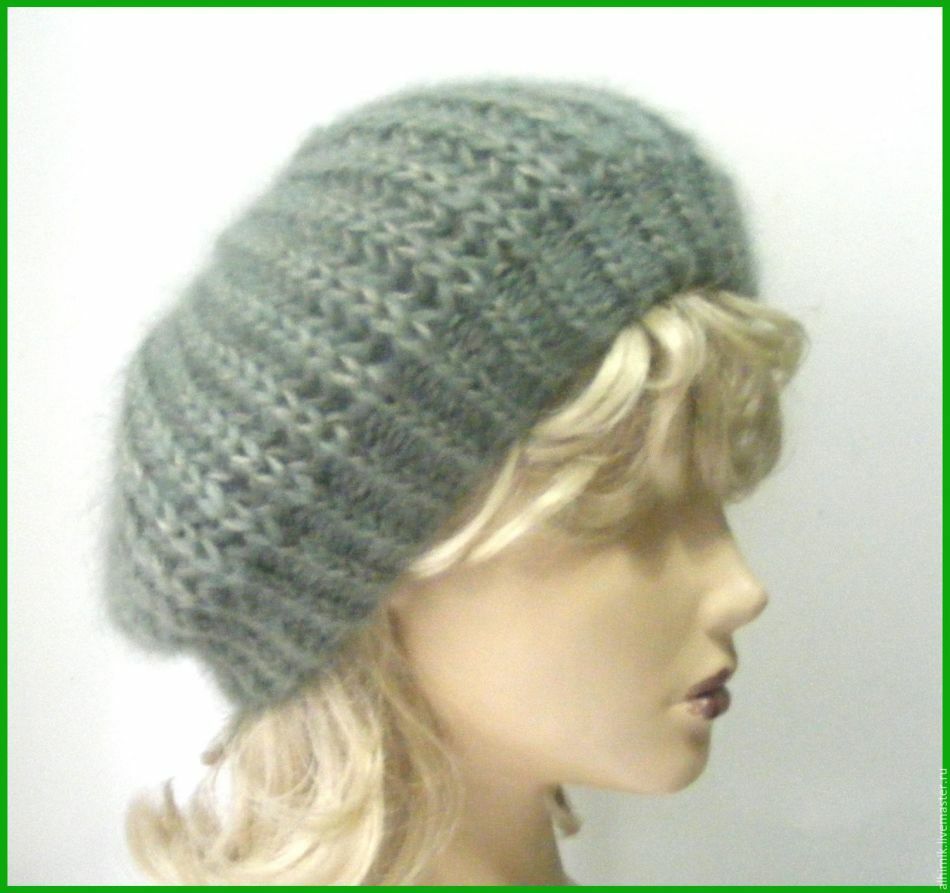 ready mohair associated spokes
ready mohair associated spokes Actual for a mohair beret is the easiest knitting - facial smoothness. Therefore, if you are only planning to pick up your knitting needles and tie your headdress, boldly take mohair threads.
- bind the beak with a 2x2 rubber band to a height of 5 cm,
- in the last row increase the number of loops by 30%,
- knit the straight blade to a height of 23-25 cm,
- divide the loops into 6-7 or 8 equal parts-wedges,
- in eachor through a number, tie together 2 loops at the end of each wedge,
- 6-7 or 8 final loops tighten the thread.
Takes with English rubber band knitting needles: description
 knitted female takes with an English rubber band on the dummy
knitted female takes with an English rubber band on the dummy Feature of knitting beret by this pattern is a work on 2 spokes with the subsequent stitching of the product.
- .The smaller the footprint, the greater the consumption,
- spokes in thickness equal to the diameter of the yarn and 1 set that is more by one and a half the size,
- scissors
- needle or hook
- measuring the volume of the head and tying the control sample to determine the future dimensions of the beret,type the hinges and connect them to the rings by extending the penultimate loop through the outermost,
- with an elastic band of 1x1 at least 3 cm,
- add 25-30% of the loops in the last row of the rubber band so that there is no hole from the crochet. The best way is to pull out the lower rows of the hinges,
- , continue working on the spokes of a larger diameter, drawing the pattern of the English rubber band,
- , after 13-15 cm from the place where the skate goes to the dome, go to the knitting of the usual gum and gradually loosen the hinges,
- final 7-10 loopsthread the thread,
- the finished product with a needle or crochet.
 diagram and detailed demonstration of knitting of English gum
diagram and detailed demonstration of knitting of English gum Takes with leaves knitting needles:
 blue-knitted crocheted knit card with berries and scarf
blue-knitted crocheted knit card with berries and scarf From the nuances of choosing the leaves as the main pattern for knitting beret, note:
- combine them with braids on the bake or as stems on the main beret cloth,
- carefully calculate the number of loops so that each rapport of the pattern is visible on the finished product and does not suffer from a reductionhinges bottom,
- if you like berets with a minimum volume, knit 7-8 repetitions of the pattern scheme, if with the maximum - 10-12,
- when knitting the bottom go to the front loops or pick up the charts of smaller leaves,
- looks the center of the bottom of the beret, made in the form of petals of a flower.
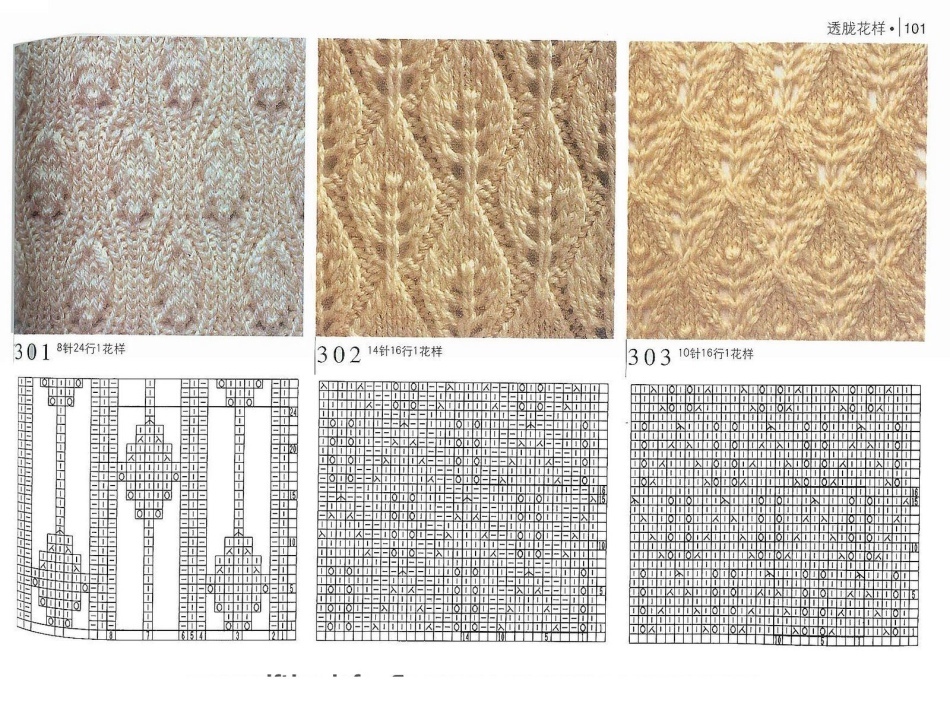 knitting pattern knitting patterns, leaves, option 1
knitting pattern knitting patterns, leaves, option 1 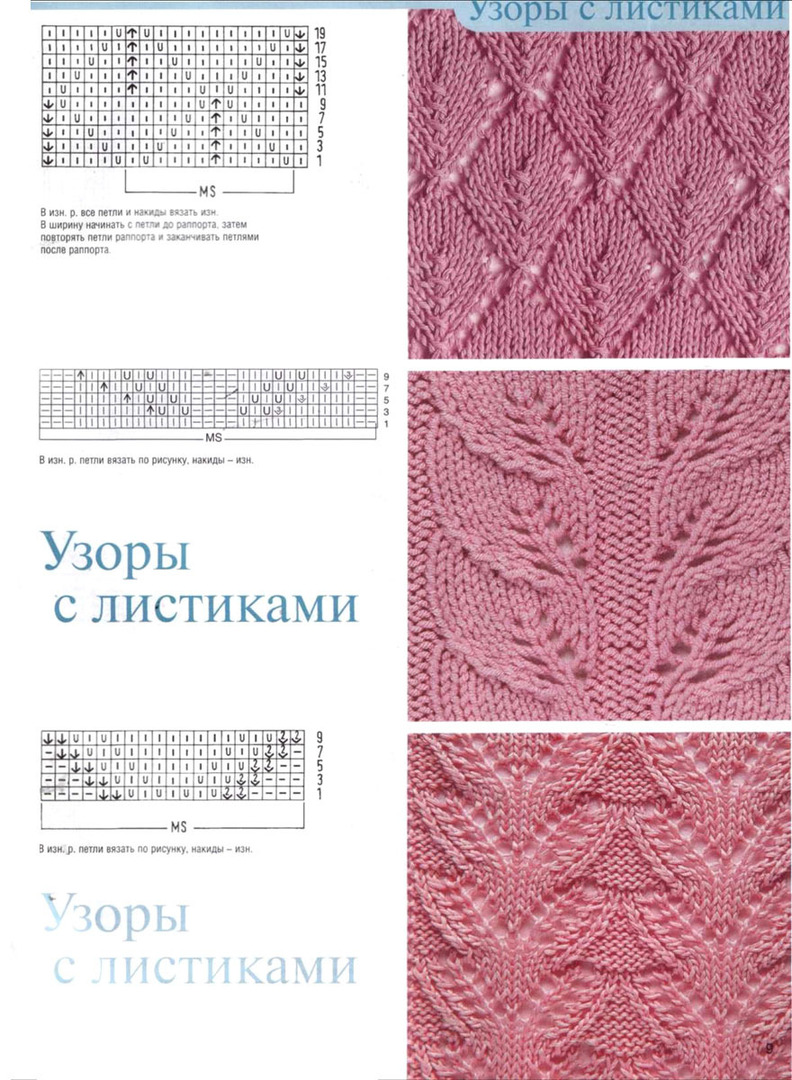 knitting pattern knitting patterns patterns, option 2
knitting pattern knitting patterns patterns, option 2 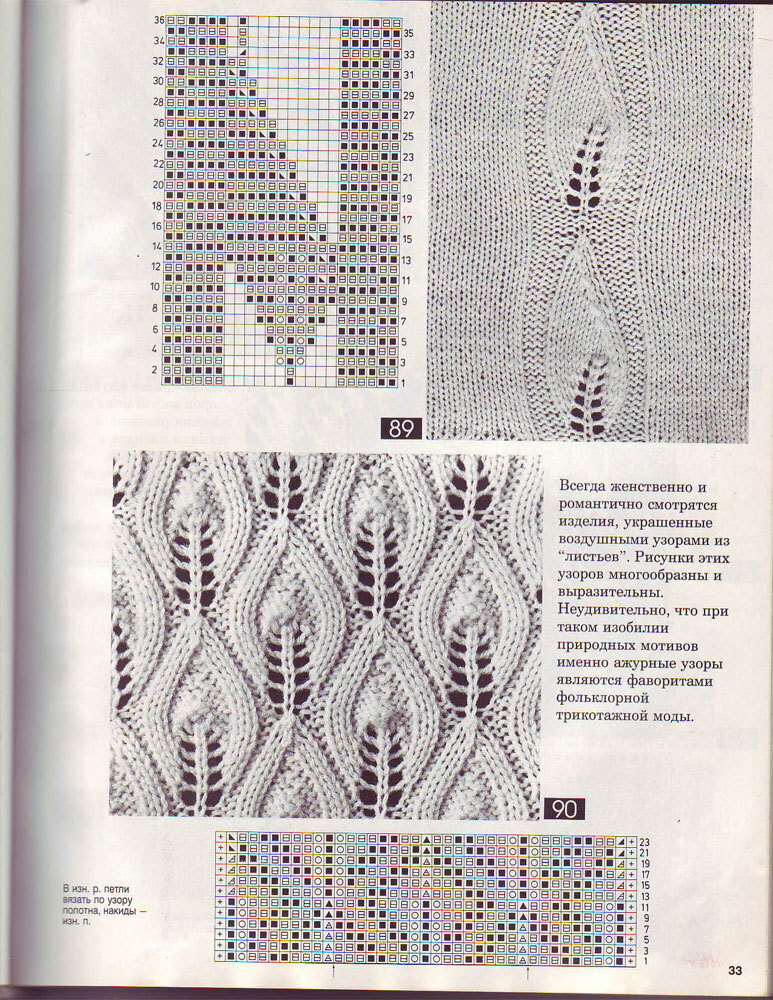 knitting patterns knitting patterns, option 3
knitting patterns knitting patterns, option 3 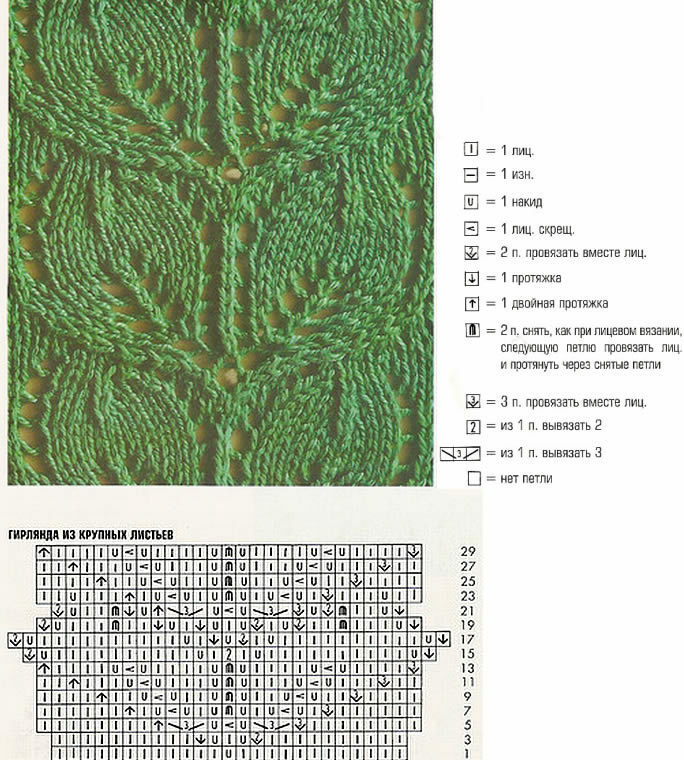 knitting patterns knitting patterns, option 4
knitting patterns knitting patterns, option 4 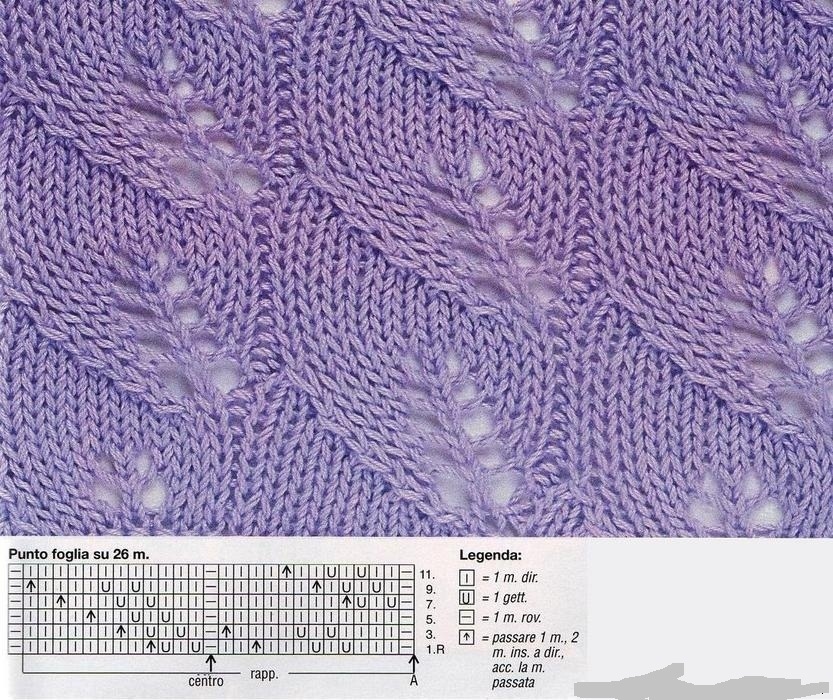 knitting patterns knitting patterns, option 5
knitting patterns knitting patterns, option 5 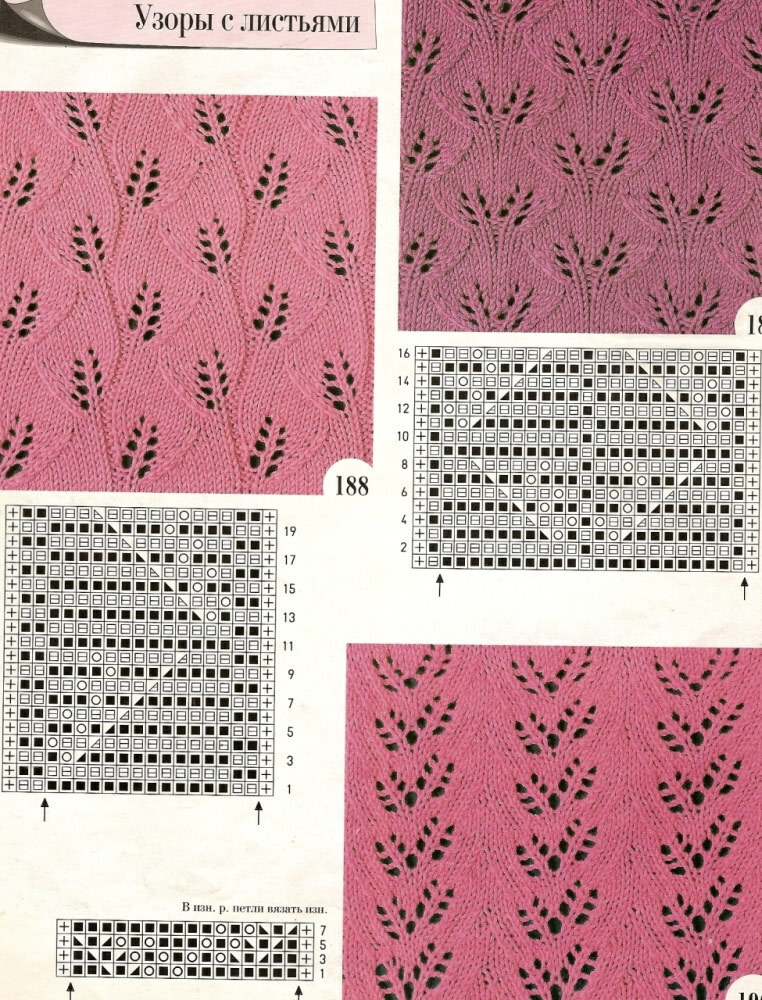 knitting patterns knitting patternsleaves, variant 6
knitting patterns knitting patternsleaves, variant 6 Takes with knitting needles:
 scheme, the bottom of a knitted knitted beret with handkerchief
scheme, the bottom of a knitted knitted beret with handkerchief To make your beret look especially interesting, take jacquard yarn.
- work on two spokes
- identical knitting loops of the base fabric
- evenness of the edges without twisting
- sufficient knitting density for the winter model
- after tying the required number of loops of the rim, knit the first row with the face strips, and then with 5-7 cm with the elastic band 2x2,
- the last row with the wrong ones, among which raise new 28-30 loops,
- continue the work of garter stitching still 8-10 cm,
- divide allloops into 6 equal parts-wedges and mark them with markers, for example, with a black thread,
- at the beginning and end of each wedge, loop 2 loops together, reducing the total number of loops by 12 pieces,
- repeat decrements every 2 rows afterwhich knitted the loops together,
- final 12 loops knit a couple more centimeters without reducing the garter stitch,
- pull them with a thread and continue to sew it from the crown to the rim.
Takes a knit with knitting needles: a schematic and description
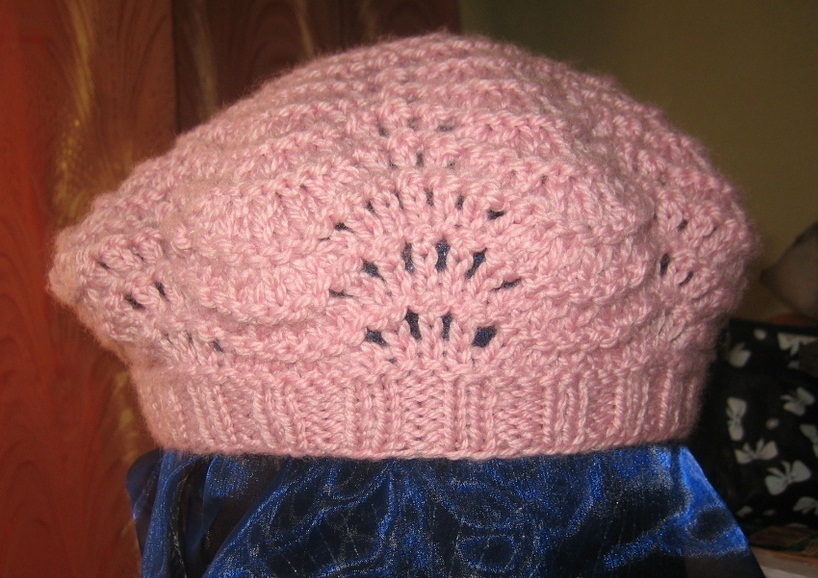 female takes, knitted with a knitted pattern
female takes, knitted with a knitted pattern Like the "leaves" pattern, "fan" has rapport - the number of loops on which it is tied. Therefore, be guided by it and carefully form the total number of beret loops.
 patterns and patterns of the "fan pattern" pattern or "peacock tail"
patterns and patterns of the "fan pattern" pattern or "peacock tail" - tie with an elastic band 1x1 5-6 cm,
- evenly increase by one third the total number of loops of the future beret,
- continue to work with the "peacock tail" pattern, performing 7-9 rapports,
- to reach the height of the product, when you tied 8 fans, break the blade into wedges and start decreasing at the end of each,
- after completing 6 more fans, remove the remaining loops,
- ifyou worked on 2 spokes, sew the crocheted cloth,
- wash beret in warm water, put it on a plate and leave until dry.
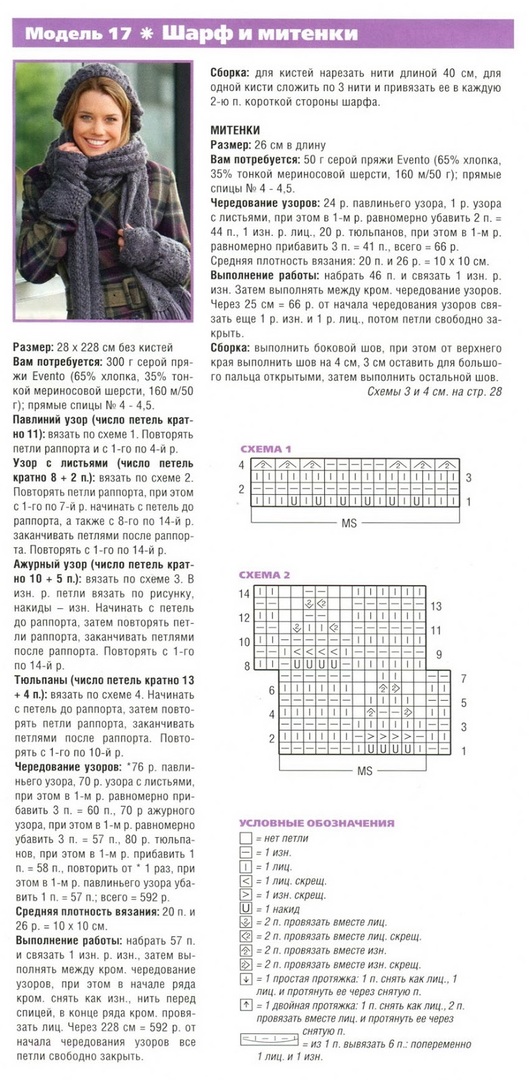 description of the job of knitting a beret with a pattern of "swirls"
description of the job of knitting a beret with a pattern of "swirls" Takes Nako( Nako) with knitting needles: description
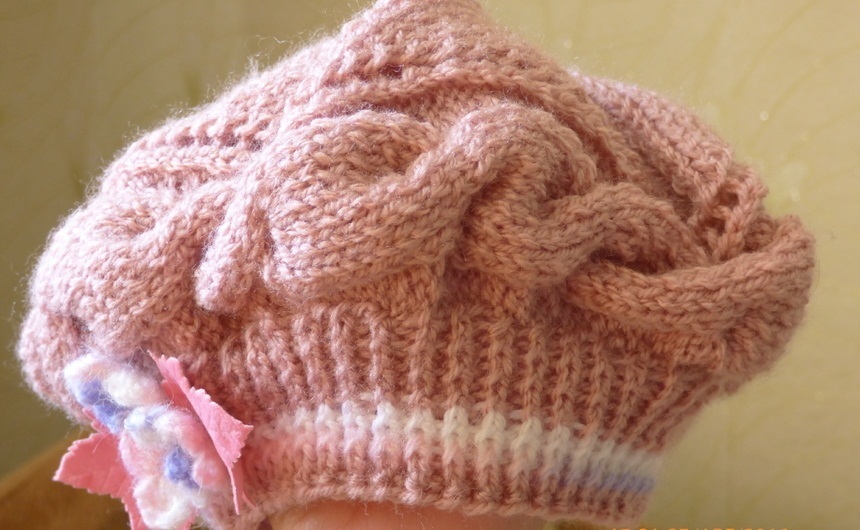 a woman knitted with knitting needles takes Nako, decorated with a flower-brooch
a woman knitted with knitting needles takes Nako, decorated with a flower-brooch In Nako, you first knit the dome from the middle of the canvas, and then the rim, sewing it or lifting the hinges from the finished part of the headdress.
- type 16 loops and knit except for edge 3 purlins, 8 facial, 1 facial, 1 purl, 1 facial,
- all even rows - according to the drawing,
- starting from the 3rd row at the end after the purl end add a cap,
- Continue to knit the extension after the back loop at the end of the row until you reach 14 loops,
- in parallel perform braids crossing every 8 rows,
- large triangle from the facial smoothness gradually reduce by 1 loop in each face row by knitting a new triangle wedge,
- all you need to tie the 6 wedges that flow nicely one from the other,
- from the edge strips of the stripe with braids, type the hinges for the rim so that they are a third smaller,
- knit with an elastic band 1x1 or 2x2 to a height of 7-8 cm,
- readytake a wash in warm water and put on a balloon for complete drying.
Takes braid with knitting needles: a schematic and description
 cute knitted needles draws a large braided pattern
cute knitted needles draws a large braided pattern The scheme of the pattern "braid" depends on the rapport. It is executed on 4, 6, 8 and so on loops divided in half for crossing.
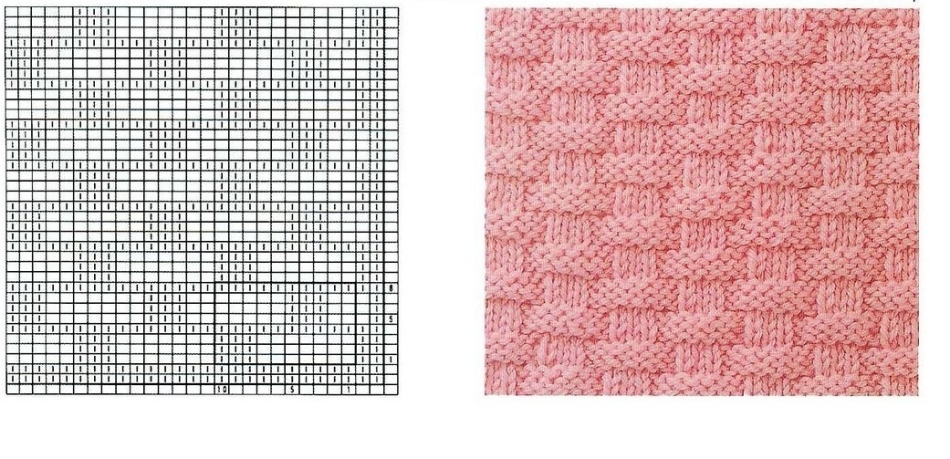 knitting pattern for the "braid" pattern, variant 1
knitting pattern for the "braid" pattern, variant 1 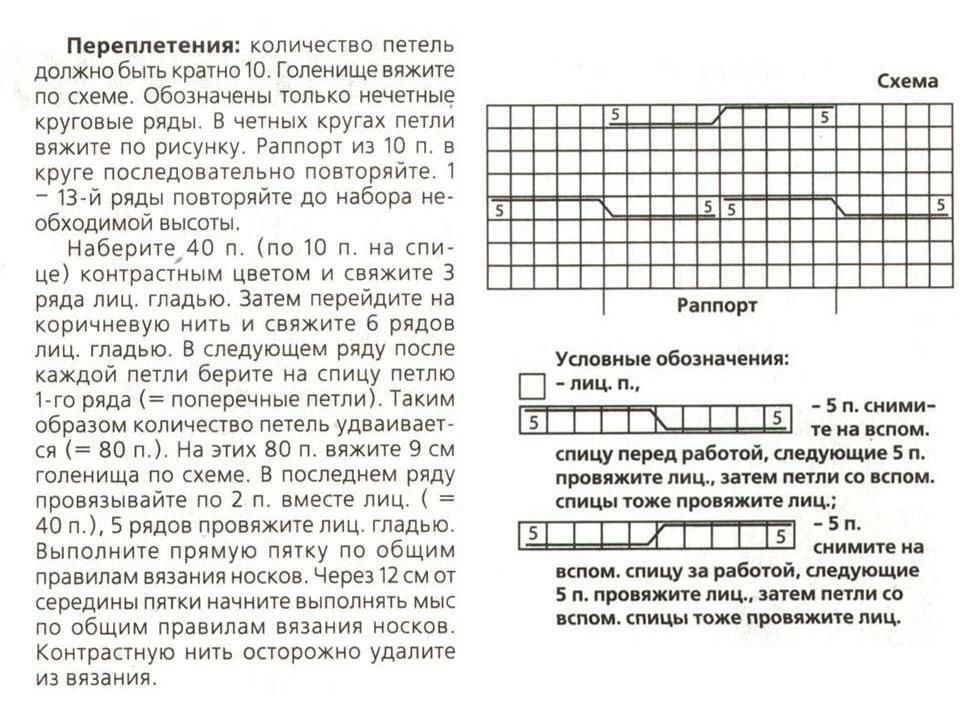 knitting pattern "braid", option 2
knitting pattern "braid", option 2 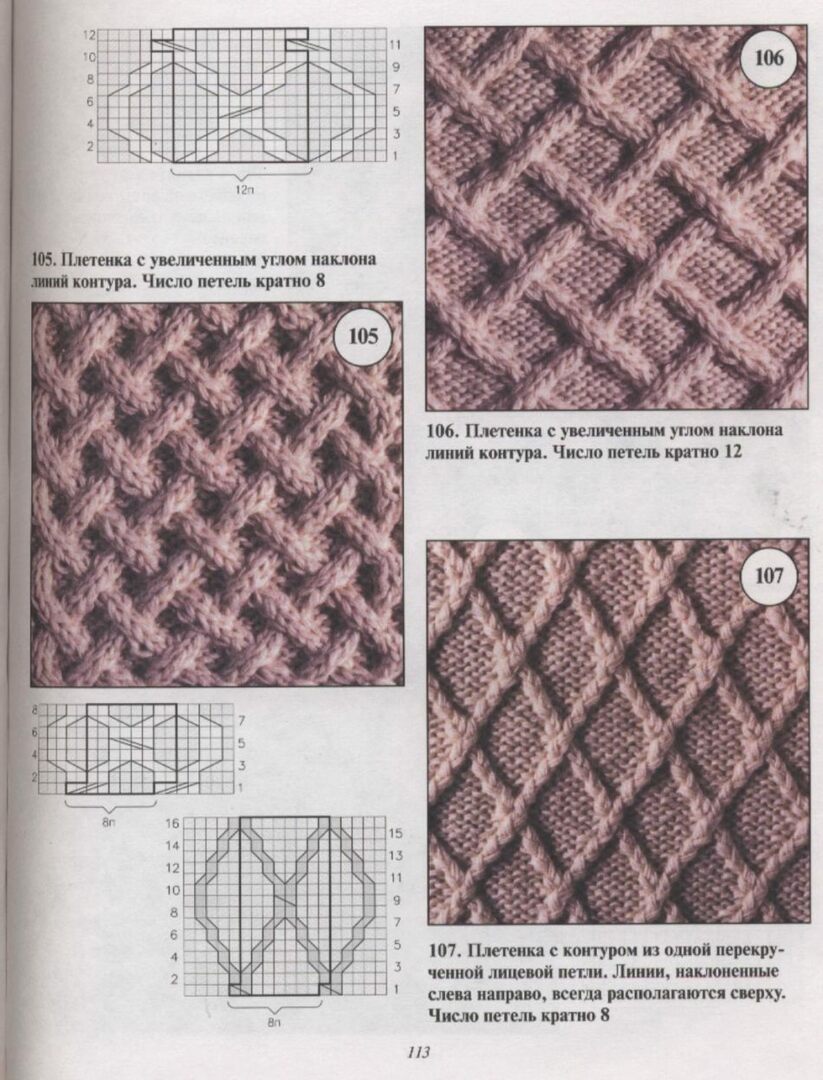 knitting pattern "braid", option 3
knitting pattern "braid", option 3 - from the elastic to the top of the
- from the crown to the rubber band
- tie the bezel1x1 or 2x2 with a height of 7-8 cm,
- increase the number of hinges by half,
- the next 4 rows, follow the front,
- , depending on the chosen rapport, cross the loops one way to the end of the row,
- the next 4-6 or 8 rows,evymi,
- cross your loop in the opposite direction to the end of the series,
- Repeat the previous 3 steps to subtraction of loops. It is convenient to do this for 5 cm before the completion of the work,
- after knitting a row with crossed loops, tie 1 row with facial,
- , repeat * 4 faces., 2 together., 2 out. * To the end of the row,
- next - 4 persons., 2 together out of., 1 out of.,
- after - 2 persons., 2 together out of., 2 out.,
- 2 persons., 2 together., 1 out of the way,
- 2 persons., 2 together out of the above.,
- all the loops knit 2 together face up until the canvas is reduced to 20 loops,
- pull the loose thread of yarn through them twice and pull them well.
And another description of the work on knitting with beret's knitting needles:
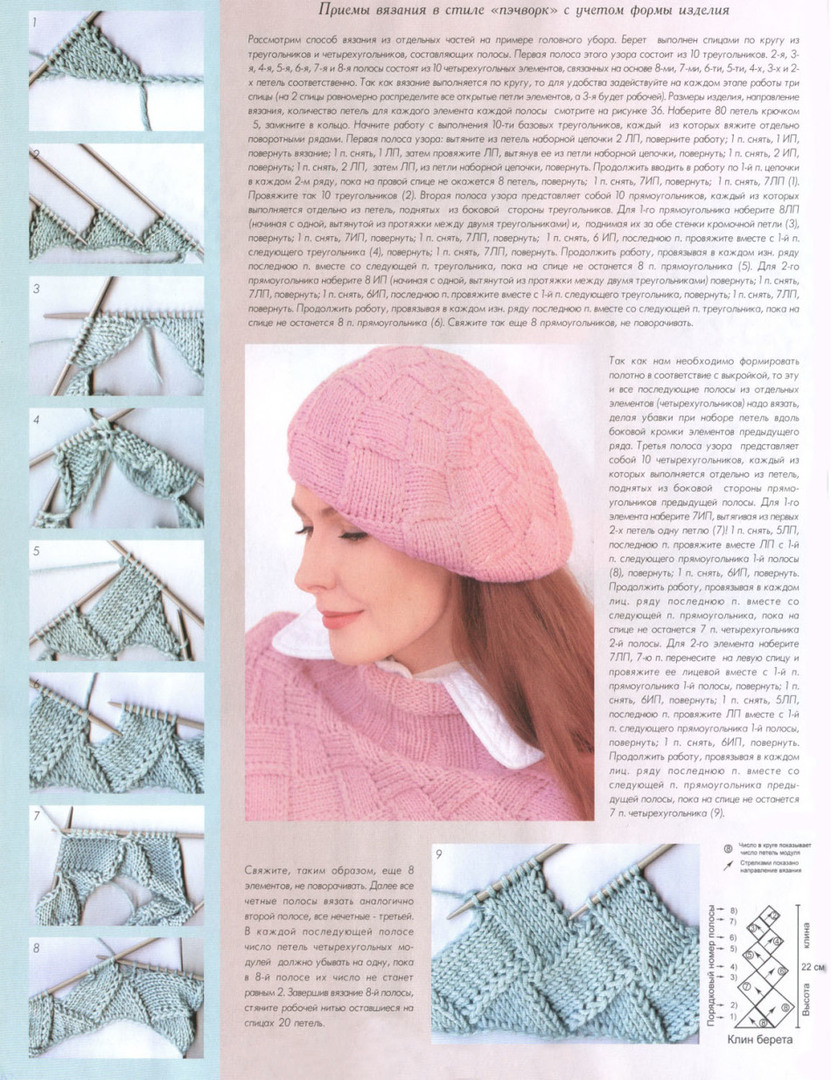 description of knitting with knitting needles of the female beret, variant 1
description of knitting with knitting needles of the female beret, variant 1 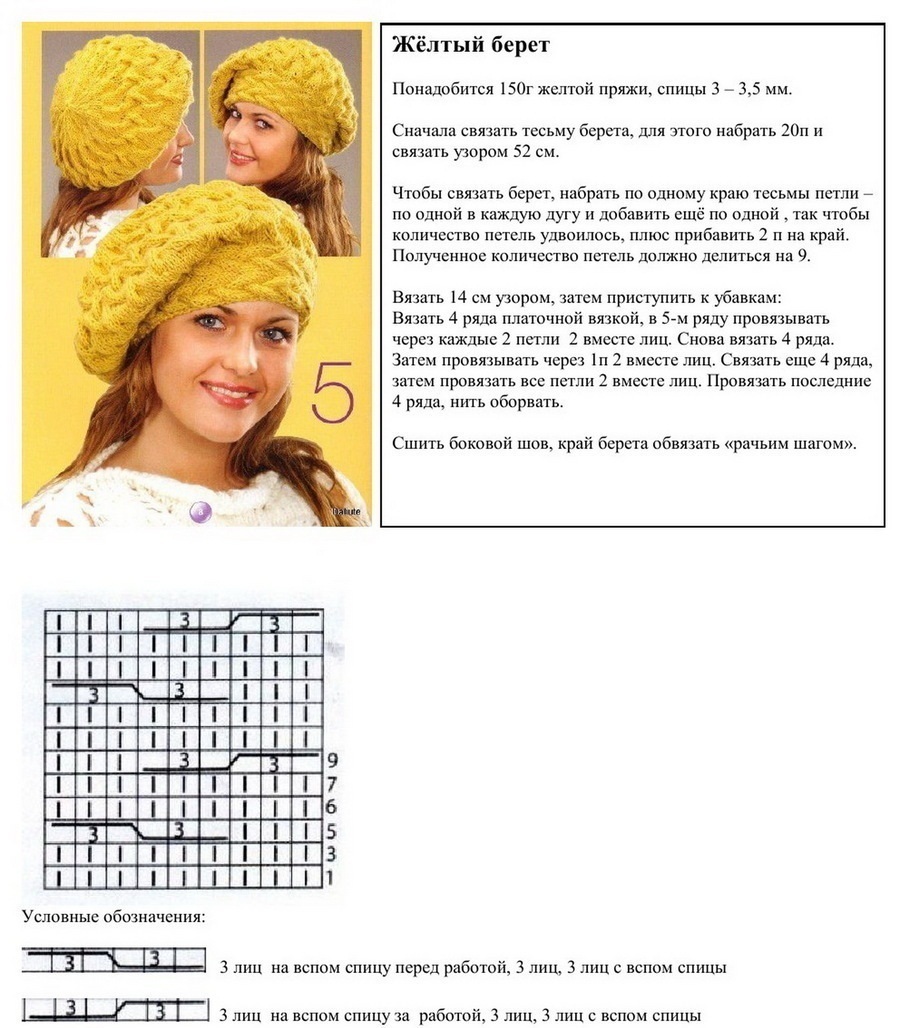 description of knitting with knitted needles by a pattern of "braid", variant 2
description of knitting with knitted needles by a pattern of "braid", variant 2 Takes the Pumpkin with knitting needles: a scheme and description
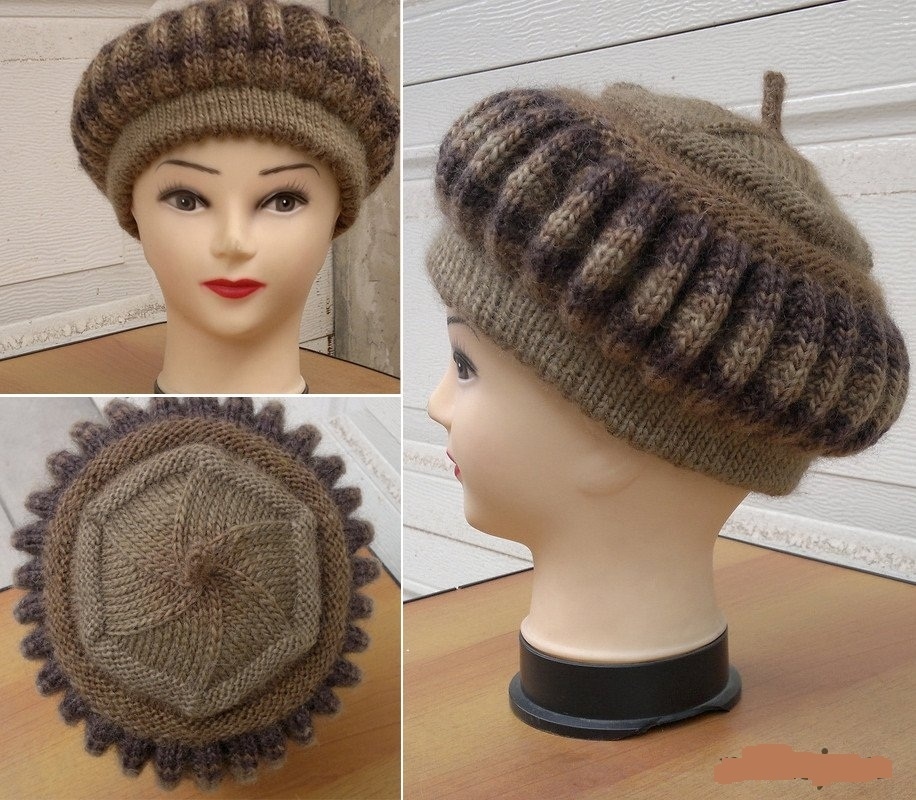 knitted needlespumpkin: view from three sides
knitted needlespumpkin: view from three sides For his knitting, take 2 colors of yarn, which are combined, for example, dark and light brown or purple and pink.
The scheme of the beret pattern is the teeth, consisting of 2 face and 1 purl loops. Around the last you will need to first add 6 loops, and then reduce them.
- yarn with 2 colors wool
- circular knitting nos. 3 and 4
- scissors
- tie a bezel of 90 loops with a double rubber band to a height of 6 cm,
- distribute the loops for knitting 30 teeth and complete the row withoutadditions,
- on both sides of each purl add 1 loop by pulling method from the previous row,
- added in the previous row of the loop, knit with the backs and again raise on both sides from the facial ones along the loop,
- is now an islet of purl and wreath from the pYes, perform the facial, necessarily adding more along the loop on both sides of the main facial patterns,
- repeat the build-up of the loops of the canvas until the moment when they become 6 around the main backside,
- is now gradually row by row, knit down the mirror pattern,
- to achievethe initial number of loops - in this case 90, make 5 rows in the back, then the series with the front rows and again 5 rows with the wrong ones,
- divide the blade into 6 sectors-wedges and reduce 1 loop at the end of each. Bind the knit with the facial,
- the final 6 loops tie up 6-7 rows and tighten the thread.
So, we have considered the nuances of knitting with women's berets by different ways, patterns, techniques.
Choose for yourself the model you like, buy yarn and spend the benefit of autumn evenings! Light to you loops!
